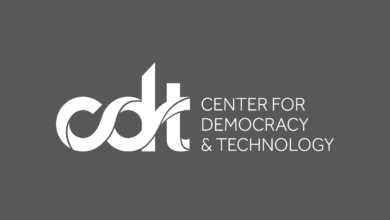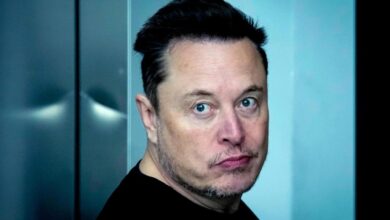Exhibition traces artificial intelligence back to our earliest desires

Article content
The entry point of AI: More than Human at the Telus Spark Science Centre may seem a bit strange.
It isn’t robots, trippy AI-inspired art or cautionary manifestos, although all those elements are included. It looks deep into the past rather than the future. The first section is dedicated to the golem, a mythical creature from the Talmud Jewish holy book that was brought to life through ritualistic chants. Next to it are pieces on loan from a Shinto shrine in Japan, honouring the ancient belief that objects are not inanimate but inhabit souls or spirits.
Advertisement 2
Article content
“The concept behind the whole exhibition is to give a different perspective on AI and to start the story very differently from what visitors expect,” says Patrick Moran, head of commercial, strategy and partnerships for the Barbican Centre in the U.K. “As people come in, I think they want to see computers straight away. But what we wanted to start with is how AI fuels a long-held human desire to imbue intelligence to inanimate objects. So we start with the tradition of the Jewish golem and we look at Shintoism. It’s the idea that it’s really as old as humanity (to want) to meet intelligence outside of ourselves. AI isn’t a new thing, it’s meeting a desire that we’ve had for a very, very long time, maybe since the dawn of humanity.”
AI: More Than Human, which will be on display until Sept. 8, comes from London’s Barbican Centre, Europe’s largest arts centre. This is its North American debut, but it has travelled to the Netherlands, the U.K., China and Spain.

The exhibit takes visitors from ancient religious beliefs and the early evolution of mathematics and medieval practice of alchemy, right up to unheralded milestones such as the 2002 invention of the robotic vacuum cleaner, or Roomba; or when a computer named Alphago defeated the champion of Go, an ancient Chinese strategy game in 2016, a first for artificial intelligence. It also peers into the near future by exploring the Europa Mission, a joint project from NASA and MIT that has scientists, engineers and programmers training a future generation of robots to search for life on other planets.
Article content
Advertisement 3
Article content
While AI is often the source of much hand-wringing, often presented in pop culture as a disruptive and slightly ominous movement, the exhibition takes a balanced approach to presenting all the good, potentially bad and wonderfully weird implications of artificial intelligence.
There is a detailed, interactive timeline that traces its evolution from its 1800 to 1956 incubation period that begins with Mary Shelley’s creation of the Gothic masterpiece Frankenstein, a cautionary tale about creating artificial life, right up to current breakthroughs in what the exhibit calls the “New Golden Age” from 1994 into the present.
That includes examples of how innovative artists are using AI in their work.
“Artists are exploiting AI to make something that is genuinely new,” Moran says.
There is an immersive exhibit called Resurrecting the Sublime. Using stored samples of DNA, synthetic biology and AI, the artists and scientists have reconstructed the smell of a flowering tree from Hawaii that became extinct in 1912.
In Justine Emard’s 2017 film, Co(AI)existence, a dancer is depicted interacting with a robot that has been animated by intelligence based on a neural network system.
Advertisement 4
Article content
The exhibition does not ignore the darker ethical implications of the technology. Computer scientist Joy Buolamwini’s video, Gender Shades, looks at how society’s racial, skin type and gender bias can be replicated in datasets used to train AI. Her work centres on the idea that the facial analysis software could not detect her face unless she wore a white mask, which is also on display. The exhibition also includes a 2016 open letter or manifesto from The Future of Life Institute that calls for a ban on autonomous weapons that select and engage targets without human intervention. Signatories include Stephen Hawking, Elon Musk, Steve Wozniak and Noam Chomsky.
“We need to be critical friends, critical researchers working around AI and not just saying ‘This is great, this is solving all of our problems,’” Moran says. “We need to collectively put limits on these technologies as well. Questions about wars being fought entirely autonomously. Is that morally something we want to engage with?”
But the main thrust of the exhibit is to show that AI is a “reflection of us and our desires,” Moran says. “We want to expand people’s horizons of what AI can be used for,” he says. “This exhibition is a real blending of arts, science and technology.”
AI: More Than Human runs from June 1 to Sept. 8 at the Telus Spark Science Centre.
Article content



